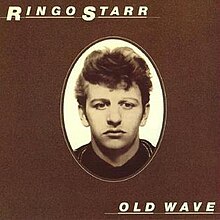In addition to the Beatles' films A Hard Day's Night (1964), Help! (1965), Magical Mystery Tour (1967), Yellow Submarine (1968) and Let It Be (1970), Ringo Starr also acted in films such as Candy (1968), The Magic Christian, Blindman (1971), Son of Dracula (1974) and Caveman (1981). Starr directed and appeared in Born to Boogie (1972), a concert film featuring Marc Bolan and T. Rex. For the 1979 documentary film on the Who, The Kids Are Alright, Starr appeared in interview segments with fellow drummer Keith Moon. He starred as Larry the Dwarf in Frank Zappa's 200 Motels (1971). His voice is also featured in Harry Nilsson's animated film The Point! (1971).
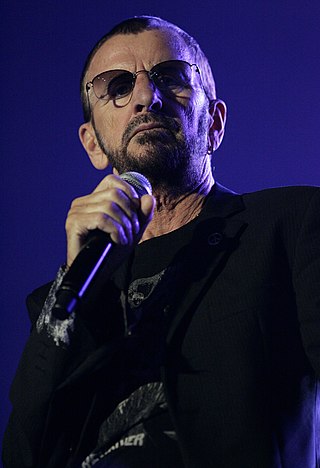
English musician Ringo Starr has released twenty studio albums and forty-six singles. Starr achieved international fame as a member of British rock band the Beatles. When the band broke up in 1970, Starr embarked on a solo career. Along with the other Beatles, he spent the first half of the 1970s on Apple Records, the label created by the band for themselves. Starr moved to Atlantic Records after his contract with EMI expired and his career diminished in commercial impact, even though he continued to record and eventually tour with his All-Starr Band in 1989.
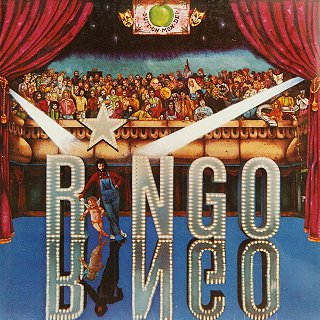
Ringo is the third studio album by English musician Ringo Starr, released in 1973 on Apple Records. It peaked at No. 7 on the UK Albums Chart and No. 2 on the Billboard 200 and has been certified platinum by the RIAA. In Canada, it reached No. 1 on the RPM national albums chart.

Ringo Rama is the 13th studio album by Ringo Starr, released in 2003.

Beaucoups of Blues is the second studio album by the English rock musician and former Beatle Ringo Starr. It was released in September 1970, five months after his debut solo album, Sentimental Journey. Beaucoups of Blues is very far removed in style from its pop-based predecessor, relying on country and western influences. A longtime fan of the genre, Starr recorded the album over three days in Nashville with producer Pete Drake and an ensemble of local session players. Beaucoups of Blues failed to chart in Britain but achieved moderate commercial success in the United States, where it reached number 35 on Billboard's Country Albums list and number 65 on the Billboard Top LPs chart.

Goodnight Vienna is the fourth studio album by Ringo Starr. It was recorded in the summer of 1974 in Los Angeles, and released later that year. Goodnight Vienna followed the commercially successful predecessor Ringo, and Starr used many of the same players, including Billy Preston, Klaus Voormann, Robbie Robertson, Harry Nilsson, and producer Richard Perry. The title is a Liverpool slang phrase meaning "it's all over".

Blast from Your Past is a compilation album by English rock musician Ringo Starr, released on Apple Records in 1975. It is both Starr's first compilation LP and his final release under his contract with EMI. It was also the last album to be released on the Beatles' Apple label until it was revived in the 1990s.
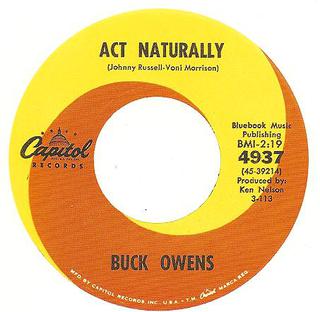
"Act Naturally" is a song written by Johnny Russell, with a writing credit given to Voni Morrison and publishing rights transferred to Buck Owens. It was originally recorded by Buck Owens and the Buckaroos, whose version reached number one on the Billboard Country Singles chart in 1963, his first chart-topper. In 2002, Shelly Fabian of About.com ranked the song number 169 on her list of the Top 500 Country Music Songs.

Vertical Man is the 11th studio album by Ringo Starr, issued in 1998. The album served as Starr's attempt at a commercial comeback following the success of The Beatles Anthology project. Starr enlisted the help of many of his musician friends in making Vertical Man, including Scott Weiland, Brian Wilson, Alanis Morissette, Ozzy Osbourne, Tom Petty, Joe Walsh, Timothy B. Schmit, Steven Tyler, and his former Beatles bandmates Paul McCartney and George Harrison. Beatles engineer Geoff Emerick mixed the tracks, and Starr and Mark Hudson served as producers.

I Wanna Be Santa Claus is the 12th studio album by Ringo Starr. A Christmas album, it was issued in 1999.

Ringo the 4th is the sixth studio album by English musician Ringo Starr, released on 20 September 1977. Its title is sometimes ascribed to him being the fourth member of the Beatles. Others have suggested that it is his fourth mainstream album, which excludes his Great American Songbook homage, Sentimental Journey, and his country-western foray, Beaucoups of Blues. However, Ringo the 4th is a dance-oriented record, crafted for him by his Atlantic Records producer, Arif Mardin.

Bad Boy is the seventh studio album by Ringo Starr, released in 1978 during a period where his musical career was sliding into freefall after several years of solo success. Although Bad Boy was meant to reverse this trend, Starr's success dwindled further.

Stop and Smell the Roses is the eighth studio album by English rock musician Ringo Starr. Released in October 1981, it followed the twin commercial failures of Ringo the 4th (1977) and Bad Boy (1978). The album includes the hit single "Wrack My Brain", written and produced by George Harrison, but otherwise failed to find commercial success. It also includes contributions from Paul McCartney, Harry Nilsson, Ronnie Wood and Stephen Stills.

Starr Struck: Best of Ringo Starr, Vol. 2 is Ringo Starr's second official compilation album, released in the US in 1989.

Ringo Starr and His All-Starr Band is Ringo Starr's first official live album, and the first album recorded with his All-Starr Band, recorded in 1989 during his successful comeback tour and released in 1990. It was also Starr's first release of unheard material in seven years.

Time Takes Time is the 10th studio album by Ringo Starr. His first studio album since 1983's Old Wave, it followed a successful 1989–90 world tour with his first All-Starr Band. Released in 1992, Time Takes Time was a critically-acclaimed comeback album, and featured several celebrity guests including Brian Wilson, Harry Nilsson and Electric Light Orchestra front-man Jeff Lynne.

Ringo Starr and His All Starr Band Volume 2: Live from Montreux is Ringo Starr's second official live album and was released in September 1993.
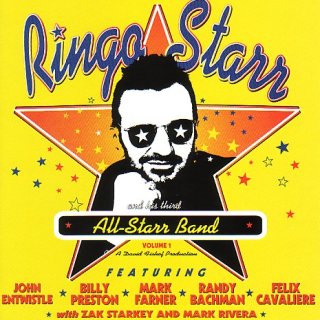
Ringo Starr and His Third All-Starr Band, Volume 1 is a limited edition live album by Ringo Starr and his All-Starr Band, recorded at the Nippon Budokan in Tokyo, Japan. It was released on 12 August 1997 by Blockbuster for $5.99. The All-Starr Band included the return of the keyboardist Billy Preston from the First All-Starr Band, and Starr's son Zak Starky continuing from on from the Second All-Starr Band.

"A Dose of Rock 'n' Roll" is a song written by Carl Groszman, who at the time was signed to Ringo Starr's record label, Ring O' Records. Starr released his own recording of the song on his 1976 album Ringo's Rotogravure. Also issued as the album's lead single, it became his first hit as an Atlantic Records artist.
Ring O' Records was a record label founded by former Beatle Ringo Starr in 1975. The label's formation coincided with the winding down of the Beatles' Apple Records and allowed Starr to continue supporting other artists' projects while maintaining his solo career. The label was shut down in 1978, having failed to achieve commercial success with a roster of artists that included David Hentschel, Bobby Keys, Graham Bonnet and Rab Noakes. Starr himself never recorded for Ring O' Records, although, following the expiration of his contract with Apple in January 1976, he signed with Polydor, which distributed his label throughout Europe. From 1977, Ring O' was distributed in some territories by Mercury Records.
